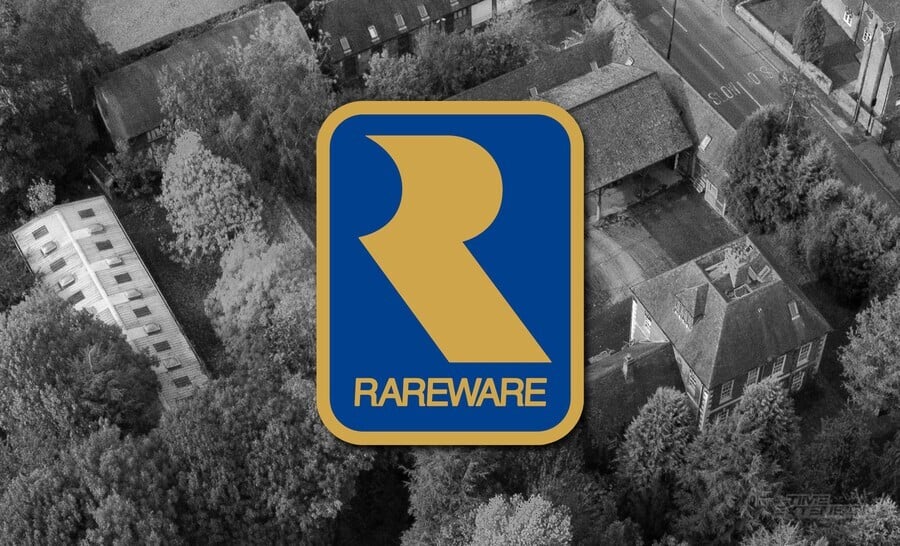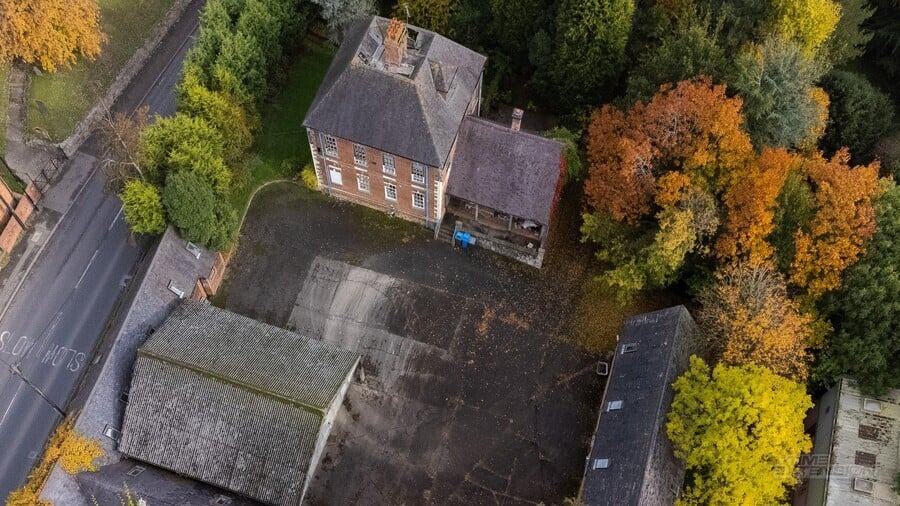
These days, Rare is a very important part of Microsoft's game studio network, overseeing the incredibly successful Sea of Thieves as well as working on Everwild, one of Xbox's key exclusives. It was also instrumental in the creation of Microsoft's avatar system on Xbox 360, as well as the Kinect controller-free interface platform.
However, for an entire generation of gamers, the name 'Rare' evokes very different memories; this is the company behind the likes of Donkey Kong Country, Battletoads, Killer Instinct, Blast Corps, Banjo-Kazooie, Jet Force Gemini and GoldenEye 007, as well as seemingly countless other NES, Game Boy, N64 and SNES titles – many of which have sold millions of copies.
All of the games listed above were developed not at Rare's current purpose-built Manor Park HQ – which it has occupied since 1999 – but in a quant farm complex which resides just a few miles up the road and, for almost a decade and a half, was the company's base of operations – making it arguably one of the most important places of video game development in the world.
It's not hyperbole to claim that some of the most iconic and commercially successful titles of the 1990s were made here, but there's precious little information available online or in print about the incredible work that took place on this site – until now, that is.
Rare's History
While Rare began life as Ultimate Play The Game in Ashby-de-la-Zouch – a prolific creator of innovative software for home micros such as the Sinclair ZX Spectrum and Commodore 64 – its founders, Tim and Chris Stamper, quickly identified home consoles as a growth market. They sold the Ultimate name to US Gold and set up Rare Ltd, relocating their base of operations to the nearby village of Twycross soon afterwards.
With a population of around 850 people (according to the 2011 census) and sitting right on the county border between Leicestershire and Warwickshire, Twycross is hardly what you'd call a bustling location; it is perhaps most famous for its internationally-acclaimed Twycross Zoo World Primate Centre. However, this has been the base for Rare for the past few decades – making it a truly notable location in terms of video game history.
The Stampers decided to explore the potential of working on Nintendo's Famicom, a system which was not available in the west at that point. Rare's team famously reverse-engineered the console, impressing Nintendo of America president Minoru Arakawa so much that he awarded the company the first western development licence for what would become the Nintendo Entertainment System. Rare's first game for the NES was Slalom, released in 1986. By this point, Rare had fully relocated to Manor Farm on the southern edge of Twycross, a Grade II listed 18th-century house surrounded by a vast array of associated outbuildings on its grounds.
From Farm To Hit Factory
"The farmhouse changed over time," recalls Paul Machacek, who joined Rare in 1988 and still works there today, serving as the company's Test Manager. He's the perfect person to give us a whistle-stop tour of how the complex evolved over the next decade. "When I joined. only the main house was usable, and the outbuildings – barns and cow sheds – were mostly derelict. In the farmhouse itself, the ground floor held a reception, meeting space and a couple of rooms that had the artists in, one of which was Tim Stamper's office. On the 1st floor, there were two large rooms connected by an archway in a wall where all programmers sat. When I joined and got a game, there were eight programmers, so eight games in production – and all in those two rooms. I recall Paul Proctor sitting near me doing pinball games, Simon Hallam close by working on Time Lord (I think), and Chris Stamper had the desk next to me, where I think he was finishing an American Football game, which might have been John Elway's Quarterback."
Machacek says that desk reshuffles were commonplace, and he soon ended up on the floor above Tim Stamper's office. "Late at night, he'd play loud music below me, and I'd play loud music above him. I think the rivalry got to the point where I briefly placed my speakers face-down on the floor."

The main house became a sprawling hub of development – both for software and hardware, it should be noted, as Rare was experimenting with its own hardware projects at the time, including the unreleased 'Play Boy' handheld. "Off the two dev rooms and above reception – which was in an extension on the side of the main house – was the IT department, or to put it simply Pete Cox," Machacek explains. "He built all of our dev gear, ROM/RAM boards, and so on. Actually, the room I described as 'Reception' was originally a farmhouse kitchen. Every day Beryl – Tim and Chris' mum – would cook us lunch in there, and we'd all sit around the table for 30mins, which is all we got to eat. It was a really small team at that point, so this was not an issue."
This wasn't just a place of work, either; the upper floors of the main house actually served as living quarters for the Rare bosses at one point. "On the top floor, there were two rooms and a toilet and shower room," continues Machacek. "Chris Stamper lived in one, and his brother Stephen lived in the other. They eventually bought houses and moved out, and the larger room (which had been Chris') became our first testing department. The other room was used as a creche for a while when Tim's kids were young, and a couple of nannies were employed. The testing room also had a hatch in the ceiling which, if you climbed on a table lead, through a small access way to the roof where the views were fantastic. I recall looking out towards the site we'd eventually buy in the mid-'90s and build our current studio on."
As the '80s drew to a close, Rare's output became prolific and it produced a host of titles for the NES, including the likes of WWF Wrestlemania (Acclaim), Wheel of Fortune (GameTek), Who Framed Roger Rabbit (LJN), Silent Service (Ultra Games), Ivan "Ironman" Stewart's Super Off Road (Tradewest) and Captain Skyhawk (Milton Bradley). With the arrival of the Nintendo Game Boy in 1989, Rare began supporting that platform, too; The Amazing Spider-Man (LJN), WWF Superstars (LJN), Sneaky Snakes (Tradewest) and Wizards & Warriors X: The Fortress of Fear (Acclaim) were just a handful of the titles it developed for the monochrome handheld.

Despite the products being produced by the studio, there were constant reminders of Rare's rustic setting. "The farmhouse and most of the outbuildings surrounded a square farmyard which was used as a car park," Machacek says. "On the side of the car park, against the perimeter wall with the road, was a chicken house with chickens everywhere. It was a lottery each day to see who might accidentally park on a chicken. I believe it did happen on one occasion."
As more staff were taken on, parking became tricky – given that most people commuted to the studio's remote location, almost everyone had their own car. "You didn't come in first in the morning and expect to get out at lunchtime for a dental appointment because people would have to back their cars out of the way, and the only place to eventually take them was the main road outside," recalls Machacek with a grimace. "Eventually, an outbuilding in the corner of the farmyard and adjacent to the road was converted into a larger kitchen and dining area, and the old one in the farmhouse was a reception after that. About one-quarter of the site was an open field where Tim kept a couple of shire horses. The Stampers also had a bunch of dogs, German Shepherds, which wandered around all the time."

As the '80s drew to a close, it quickly became apparent that the Stampers had backed the right horse. While the NES was being beaten in the UK by Sega's Master System and 16-bit home computers like the Atari ST and Amiga, in North America and Japan, the system ruled supreme – and Rare's reputation for producing quality NES (and Game Boy) software allowed the company to consistently secure the work required to expand dramatically in a relatively short space of time. Rare created over 45 games for the NES alone – as well as a dozen for the Game Boy – and it soon became clear that the main Manor Farmhouse building had become a limiting factor to growth. Thankfully, there was plenty of room to expand.
"As the studio grew in the early 1990s, we had to start refurbing the outbuildings and also reroute the driveway to its current location," says Machacek. "The drive went around the back of a barn and the first row of outbuildings and in front of a couple of old skeletal barns and the rear row of outbuildings and came out onto the A444 opposite the entrance to the church. The old entrance was actually bricked up with a small door put in so that we had easy access to cross the road and buy ice creams at the freezer centre that used to be by the church – this was knocked down years ago, and houses are there now."
Growing Pains
As more people joined the company, the existing farm buildings were converted to a new use. "The cow sheds and stables and the main barn alongside the car park were prime candidates, as they were structurally the most complete, just needing an internal refurb mostly," says Machacek. "But eventually, the outer skeletal barns had to be rebuilt into something more usable."
The converted outbuildings would house the teams behind some of Rare's most famous titles. "The GoldenEye, Killer Instinct and Conker teams were in the outbuildings on either side of the old driveway," explains Machacek. "Donkey Kong Country was in the farmyard barn upstairs. When we all got SGI machines and rendering went nuts, we had two giant SGI systems the size of double-height fridges which were known as 'The Deathstar' and 'Jabba'. They'd be rendering art 24/7 and would often crash at night when no one was around to restart them. The only air conditioning system we had at Rare was put into that room to look after those two machines."





